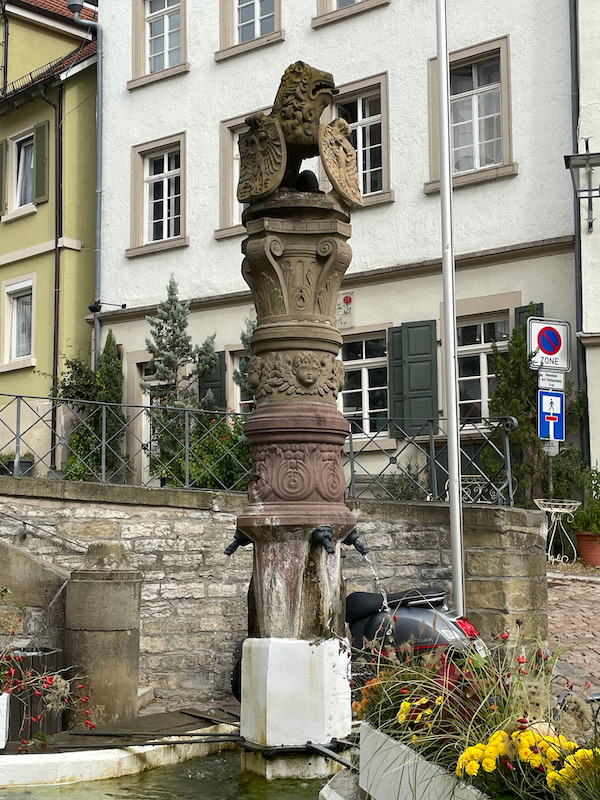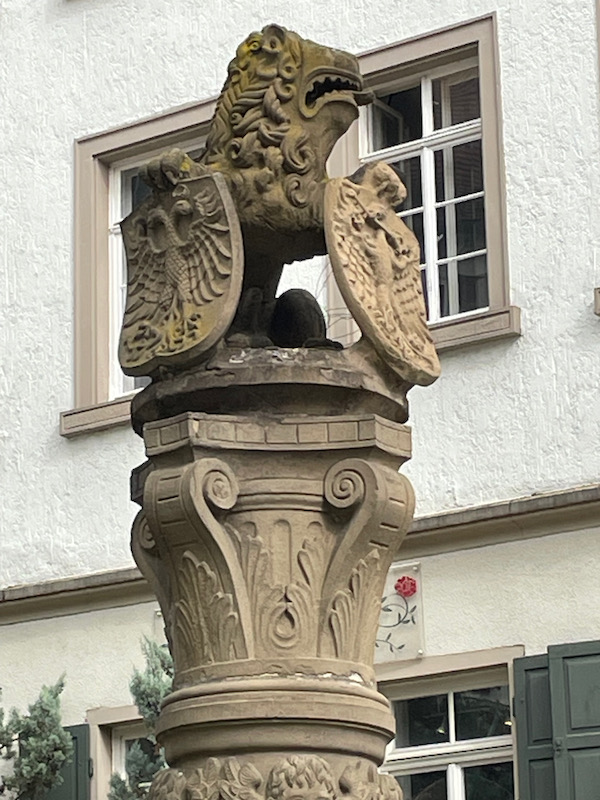Our Blog - Germany 2023 - Bad Wimpfen, Germany
We had a little joke as we headed to the town of Bad Wimpfen ... is a Bad Wimpfen the opposite of a Good Wimpfen?? Yea, I know, bad joke ... The use of "Bad" in front of another name, like Bad Wimpfen, indicates that it is (or was) an officially acknowledged spa town. So Bad Wimpfen is the spa town of Wimpfen. The town is divided into two parts: the older Wimpfen im Tal (Lower Wimpfen/ literally Wimpfen in the valley) situated on the Neckar River, and Wimpfen am Berg (Upper Wimpfen/ literally Wimpfen on the hill) containing the town center. The first traces of settlement at Bad Wimpfen date from the Neolithic and the Bronze Age. The Romans had a settlement here around 98 AD.
From a spa-town perspective, the first bore-holes for salt water drilling was done in 1752 and by 1817, a permanent sale production works was established. The first therapeutic hotel, the Mathilden Spa Hotel, opened in 1835. The spa business increased and in 1930, the town of Wimpfen became Bad Wimpfen.
The Collegiate Church of St. Peter, or Stiftskirche St Peter, is in Lower Wimpfen. In medieval times, this was the abbey church of the Wimpfen Abbey. The majority of the church is Gothic, with the exception of the western Romanesque facade and 2 towers. The two parts look so totally different that it almost looks like someone brought the two towers and west portal from somewhere else and literally glued it onto the end of the Gothic church. If you look at the 2nd picture, even the color of the stone is different.
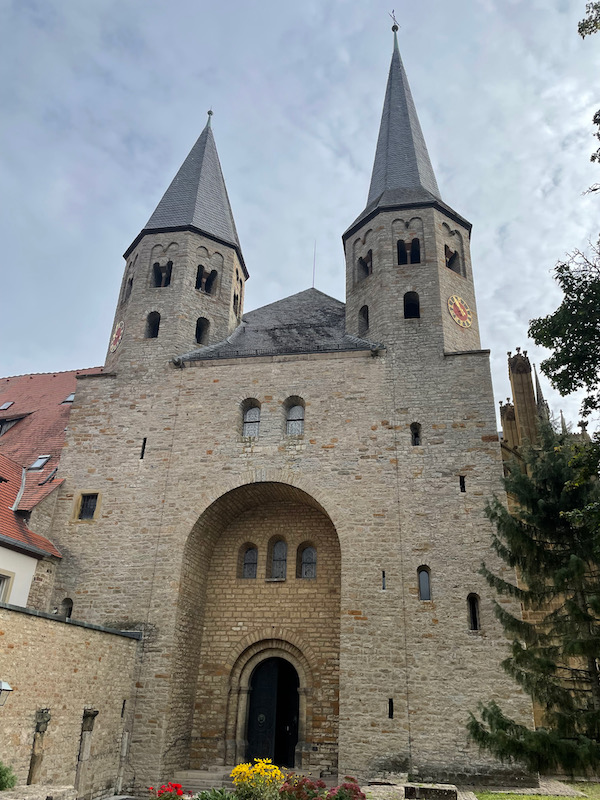
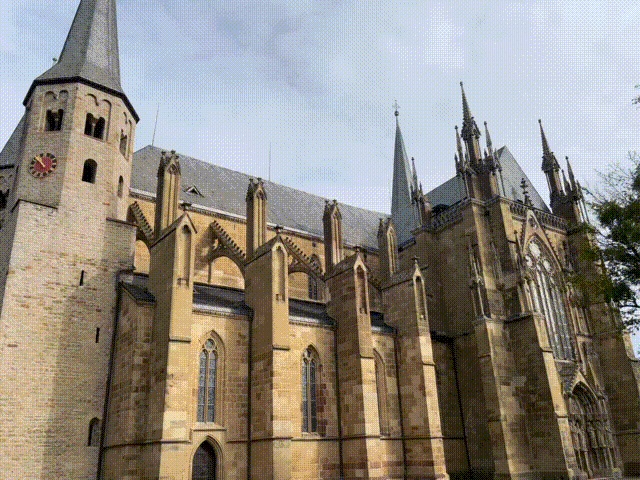
There is also a very Gothic entry way with a carved tympanum and statues. The gable is dominated by a large, six-part tracery window, which is dated to around 1280. The tympanum shows a crucifixion scene, and there are 12 smaller figures of apostles around the vault.
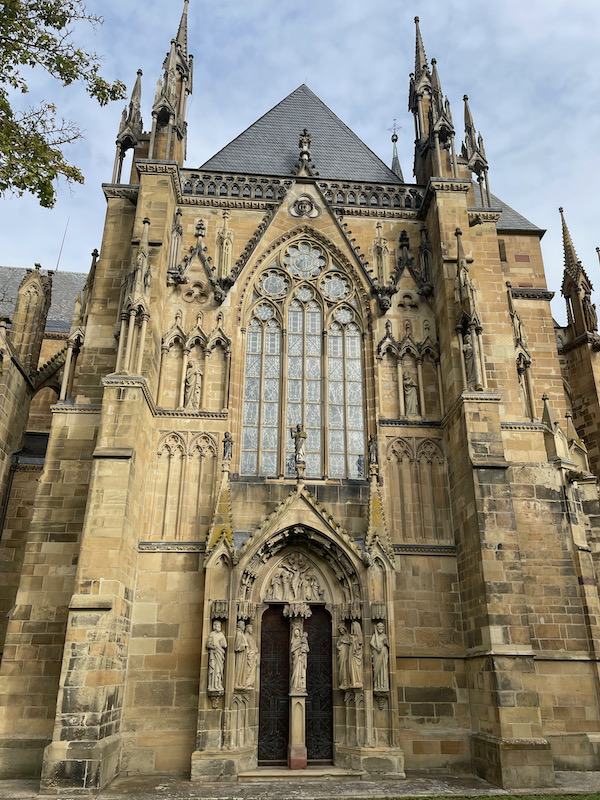
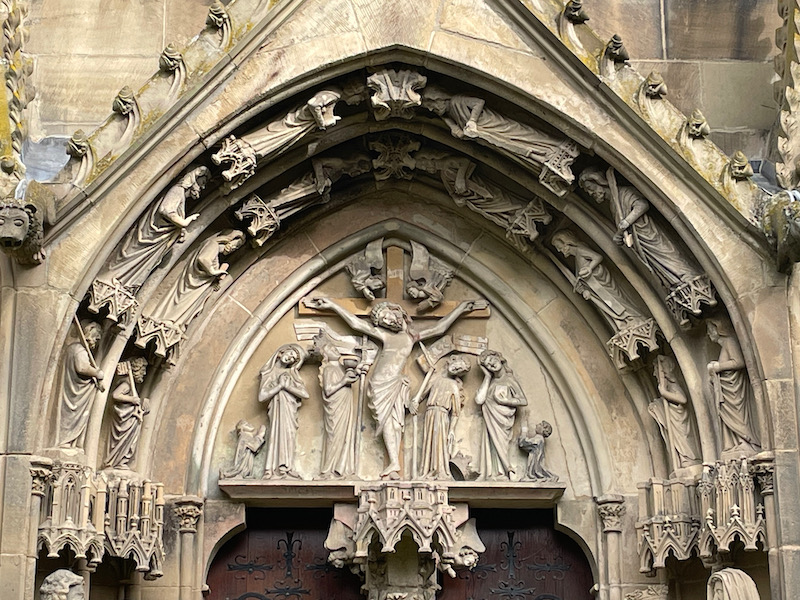
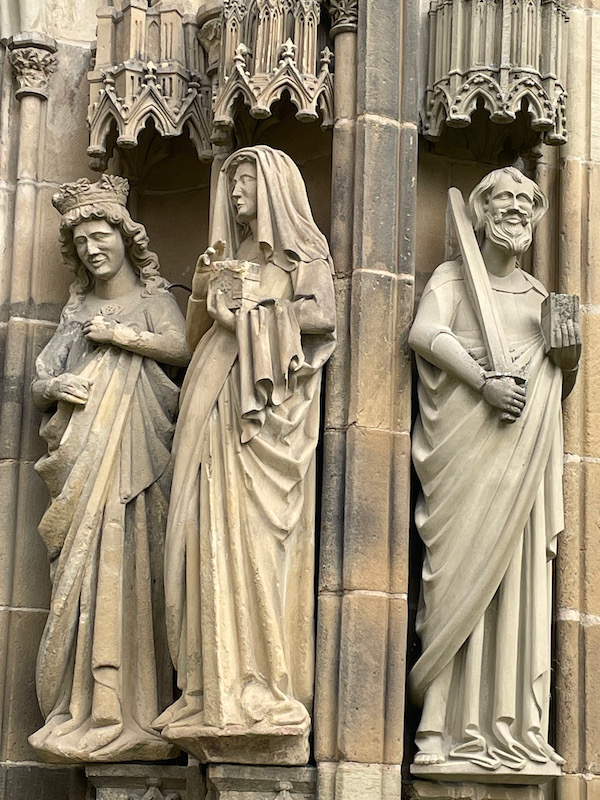
It was actually VERY dark inside, so I apologize up-front for some of the pictures. Architecturally, it is a three-aisled, four- bay basilica. Here you can see the Gothic arches separating the nave from the aisles and the ribbed vaults. The ribbing and tall Gothic windows continues in the choir.
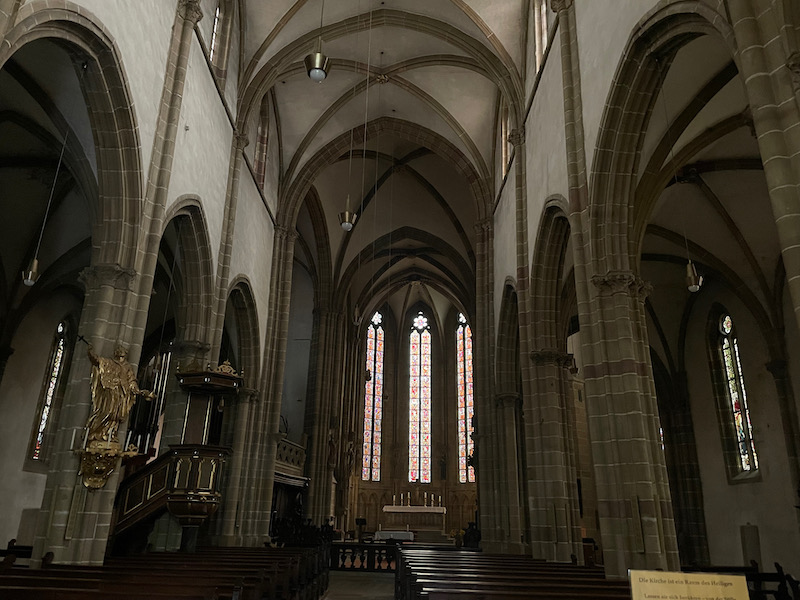
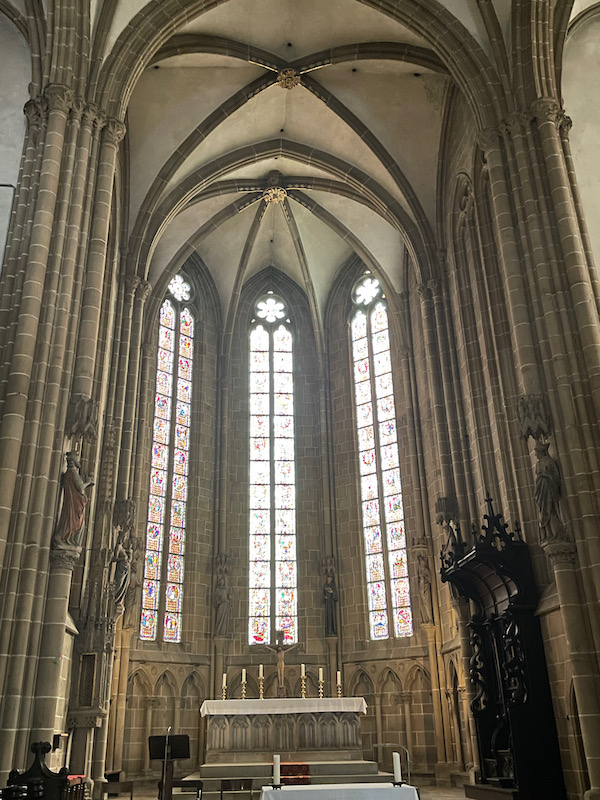
The stained glass windows in the choir are partly replicas of preserved originals, partly new creations in the style of the old panes. The other stained-glass windows in the church were recreated around 1900.
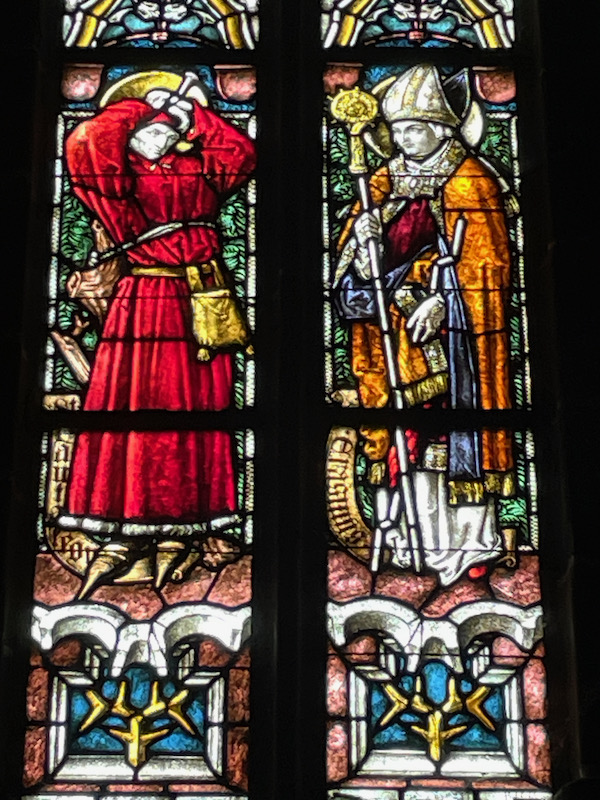
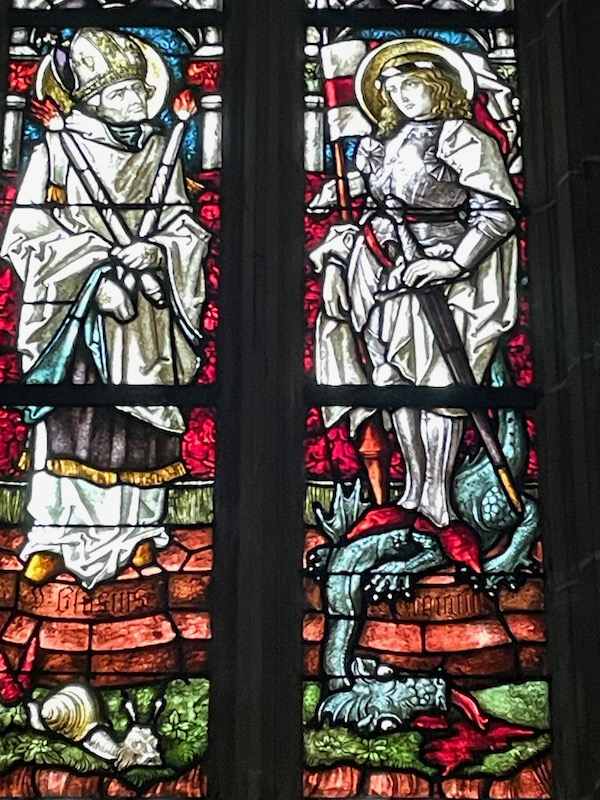
The choir stalls date from the 13th century and have only been partially renovated since then.
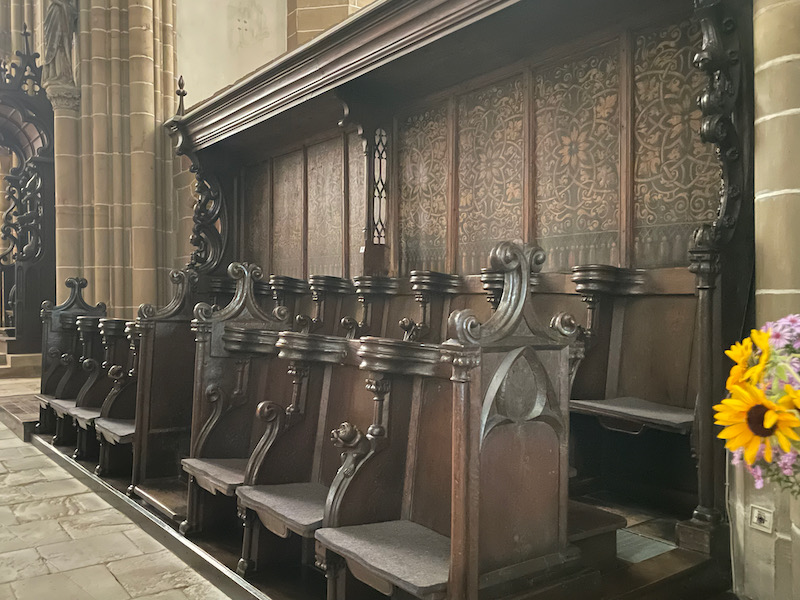
The organ is fairly small, but it has a very interesting case, especially the decorations on the back-side (2nd picture).

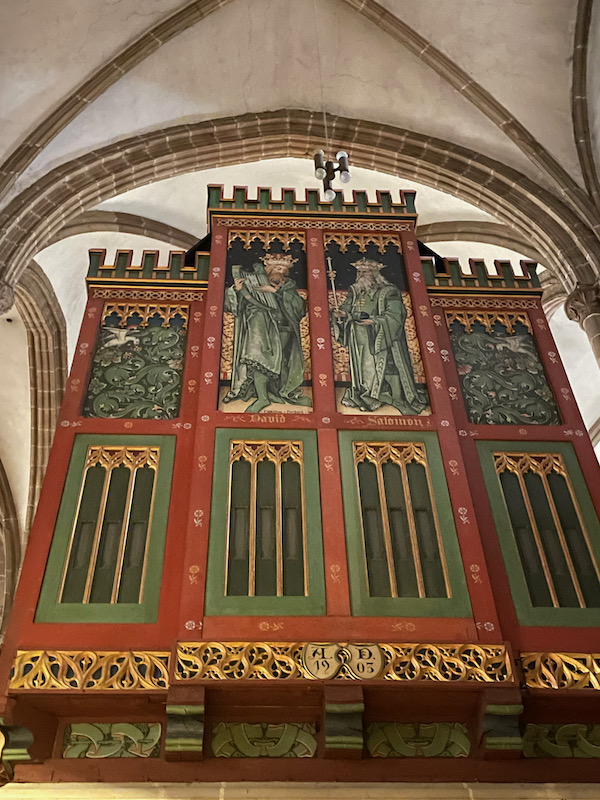
We then headed into the town center (Wimpfen am Berg) for the rest of the tour, passing by this house, one of the narrowest half-timbered houses in Germany.
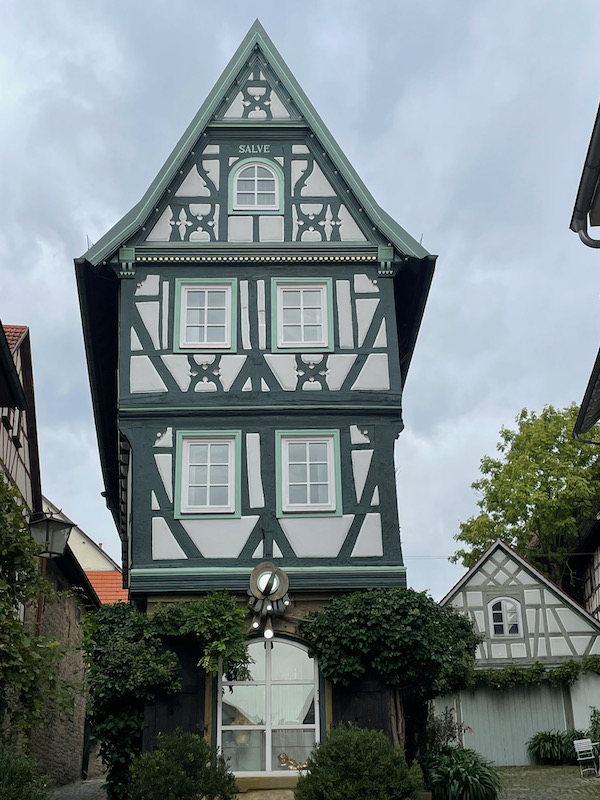
Around town, we saw a few more of these iron store signs, including one with a little pretzel hanging down under the Feyerabend name.
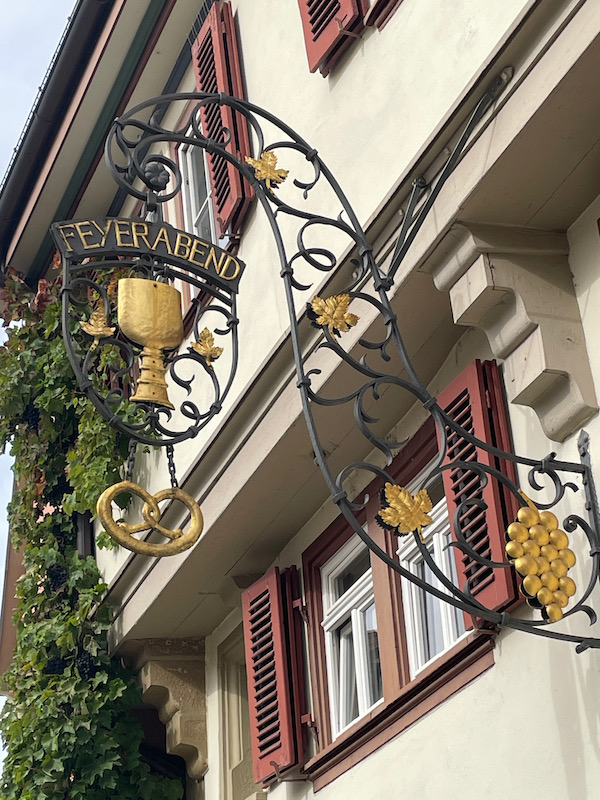
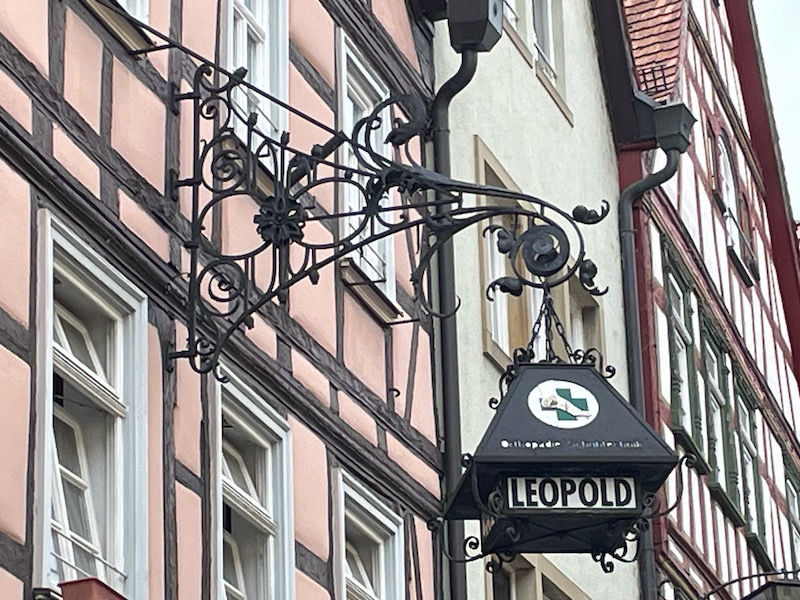
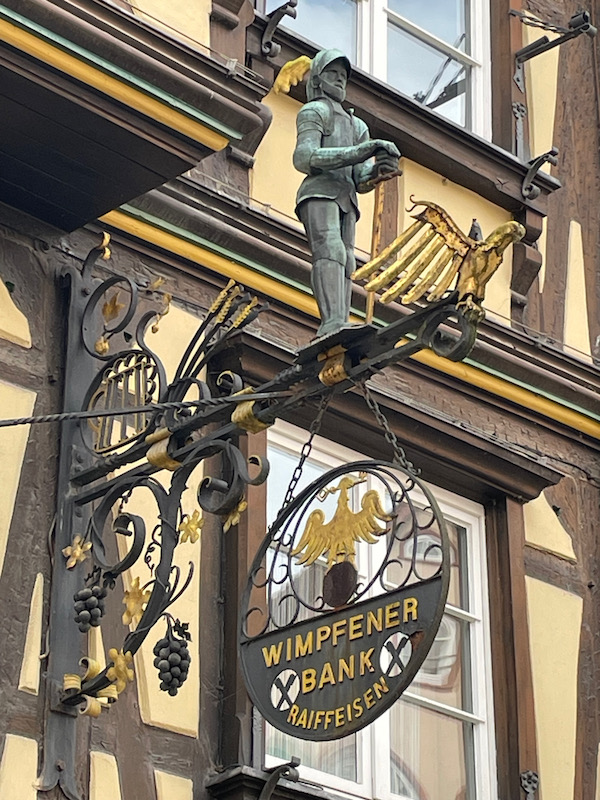
The Evangelical City Church, or Stadtkirche, dates from the 15th century and is located on the opposite side of the market square. The closely spaced, slender towers, which were originally built for a much smaller building, give the church its architecturally striking appearance. The lower two floors of the early 13th century towers are made of limestone and are the oldest parts of the church.
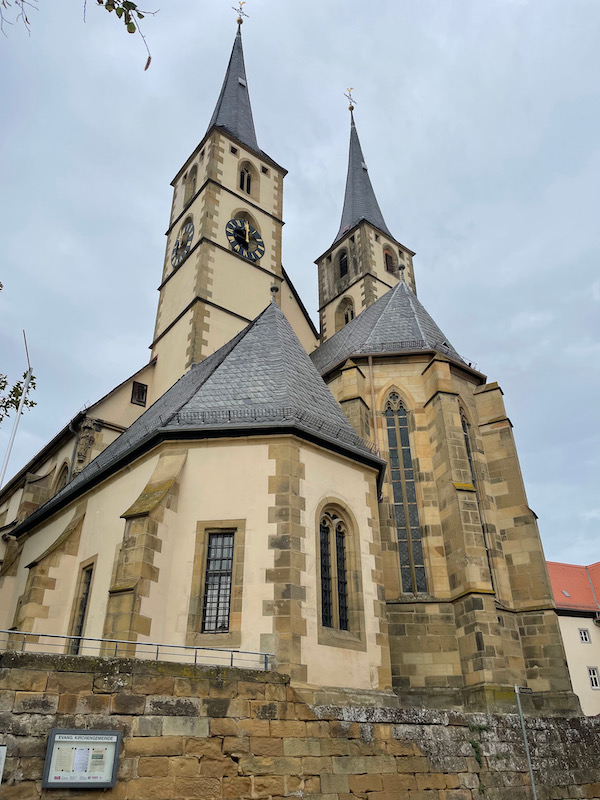
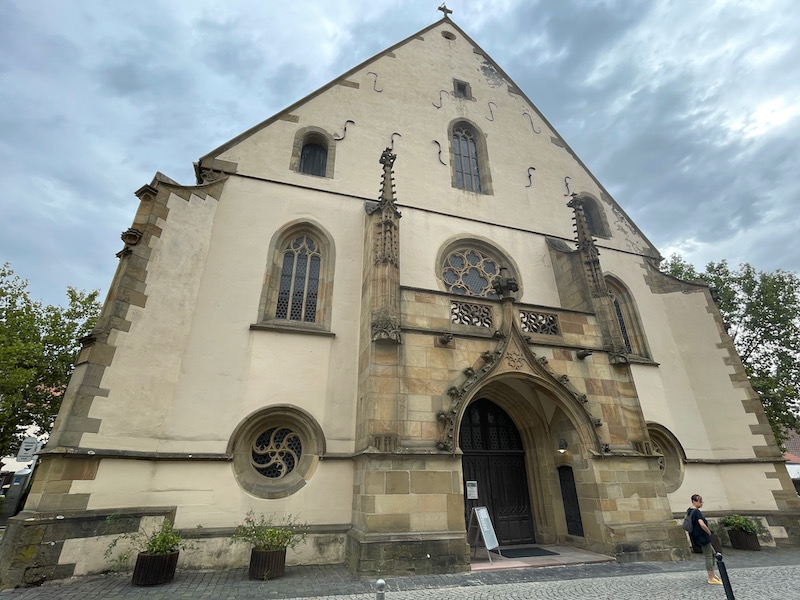
The nave has 2 side aisles although all 3 have the same height, which is a bit odd. Each of the naves are divided into six bays, which are covered with a Gothic net vaults.
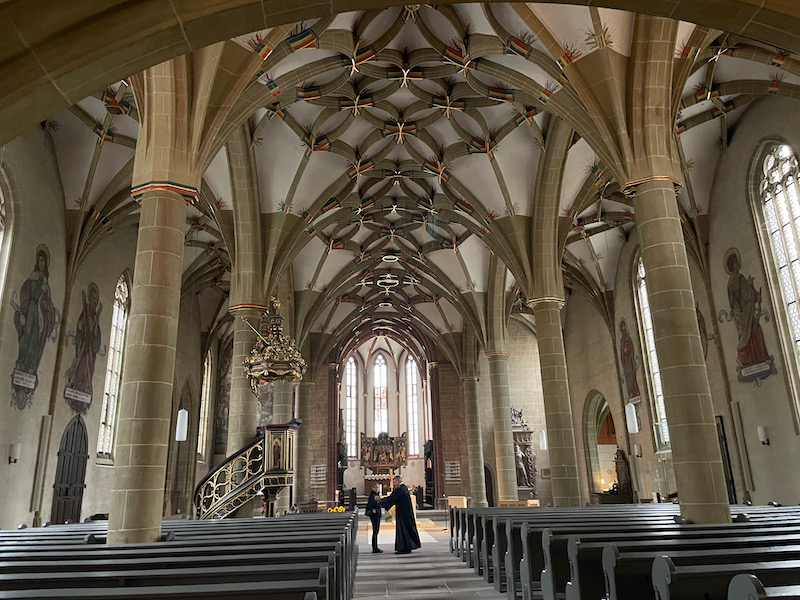
The side altar on the North also has a winged shrine for the altar. The altar dates from 1500 and has the main scene plus two additional scenes on the wings. In the central scene, Saint Quirinus stands in the middle with the cross flag and his attribute, the red shield with nine golden balls. Joining him are Saint Catherine with a crown, book and sword (left) and Saint Dorothea with a basket of roses and a boy (right). The wings depict the martyrdoms of Catherine and Quirinus. On the left wing, Catherine is beheaded while the right wing shows how Quirinus' hands and feet are chopped off in front of his daughter Balbina and Pope Alexander I. In the detail picture, you can see the hammer above the head of the man on the left, about to swing it down and strike the peg that he is holding at the ankle.
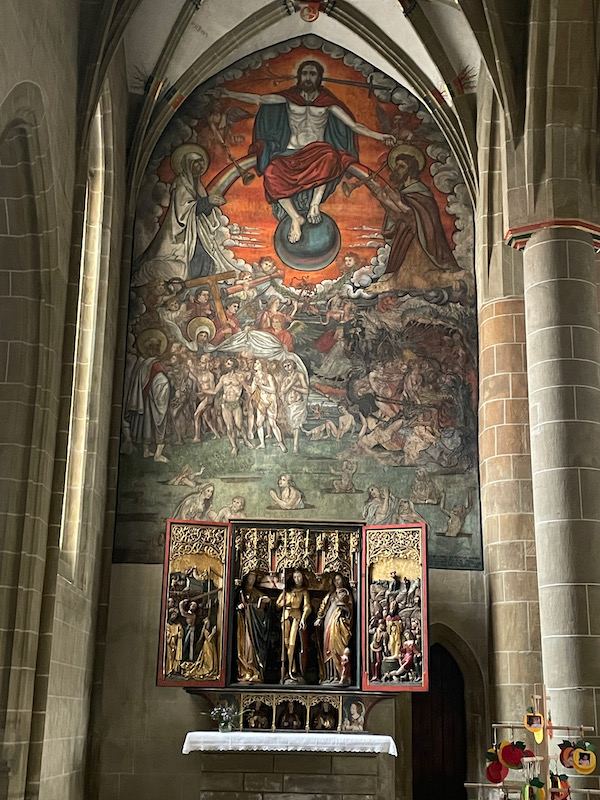
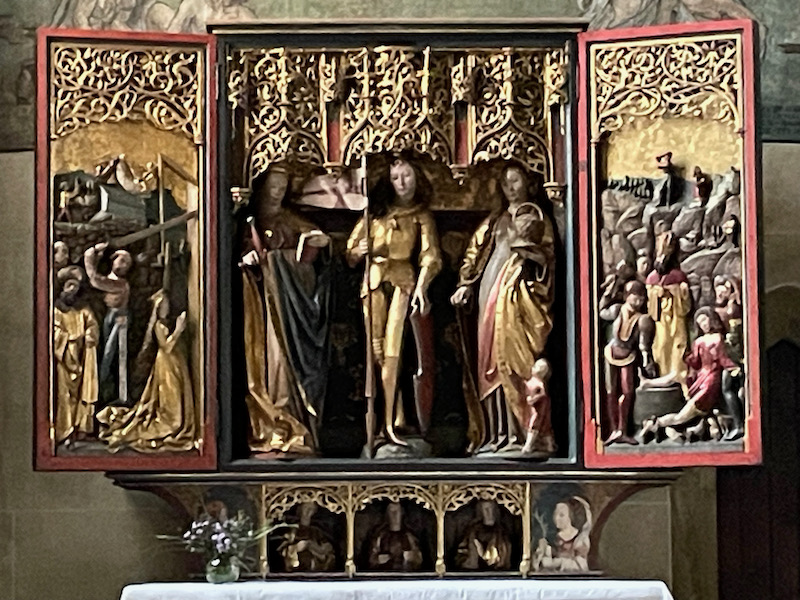
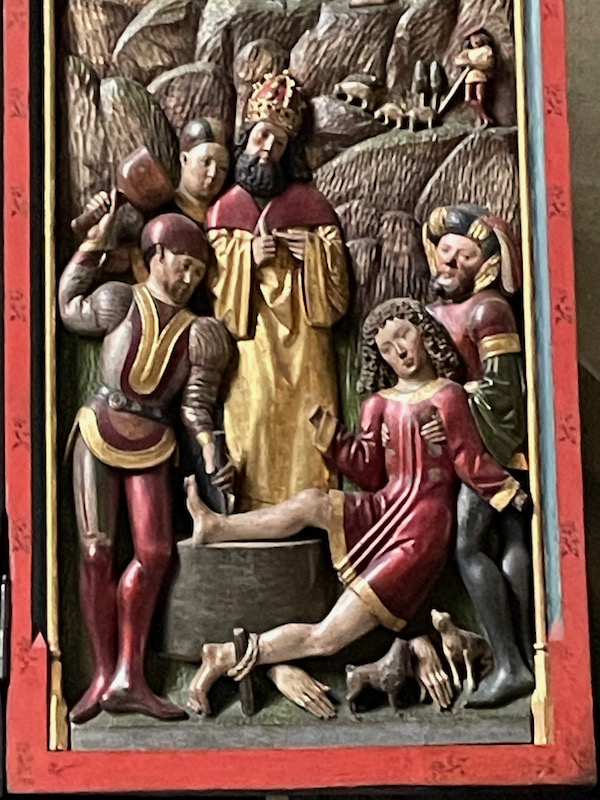
Above that altar, you saw the mural painting in the picture. This depicts the Last Judgement and dates from the 16th century, although they have been restored a couple of times. In the corners of the arches up by the gallery, there are additional paintings.

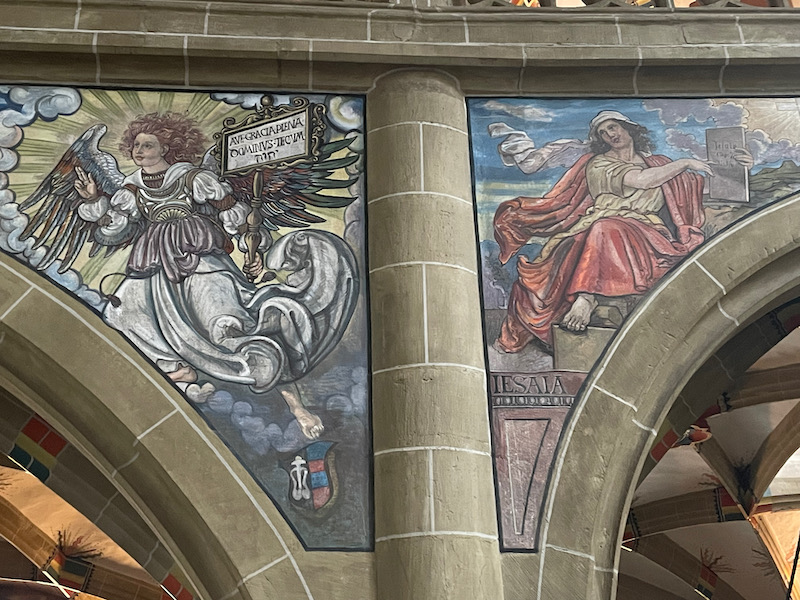
The organ dates back to 1747 and is decorated in Rococo style.
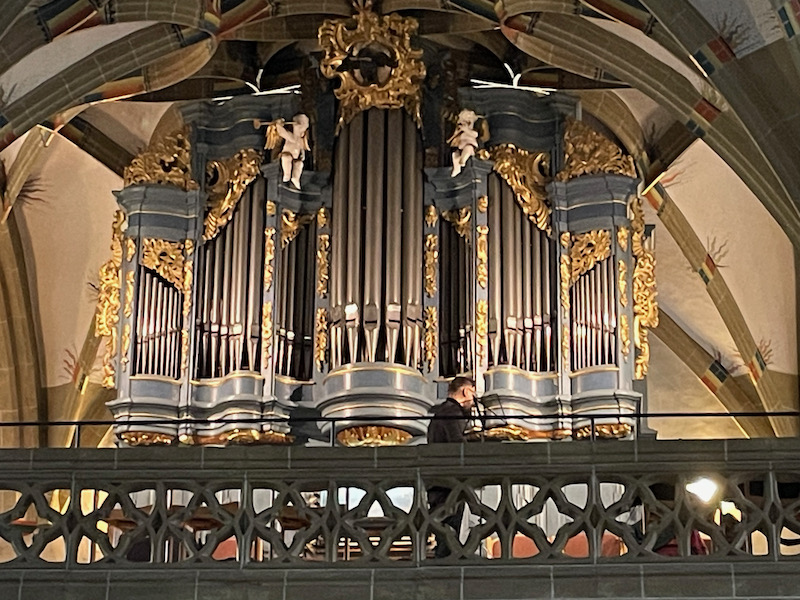
Back outside and into the main part of the old town, you can see that there are quite a few half-timbered houses here.
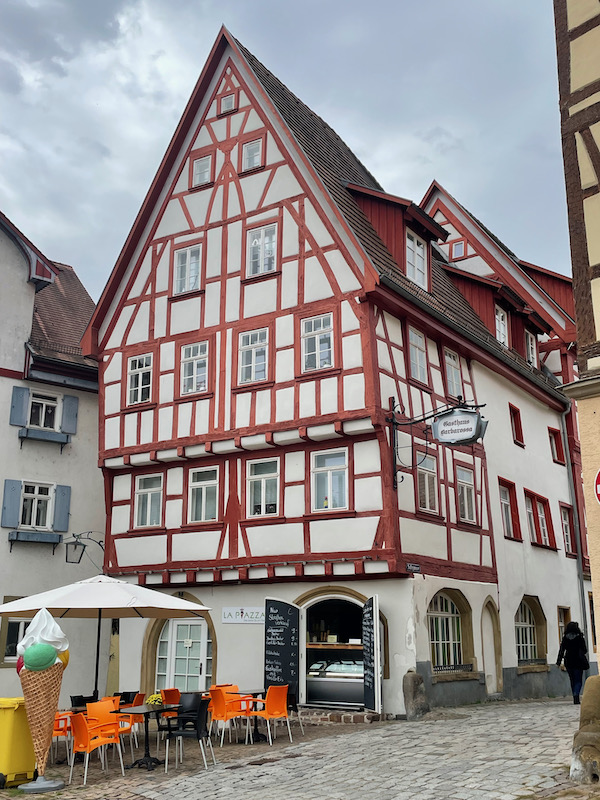
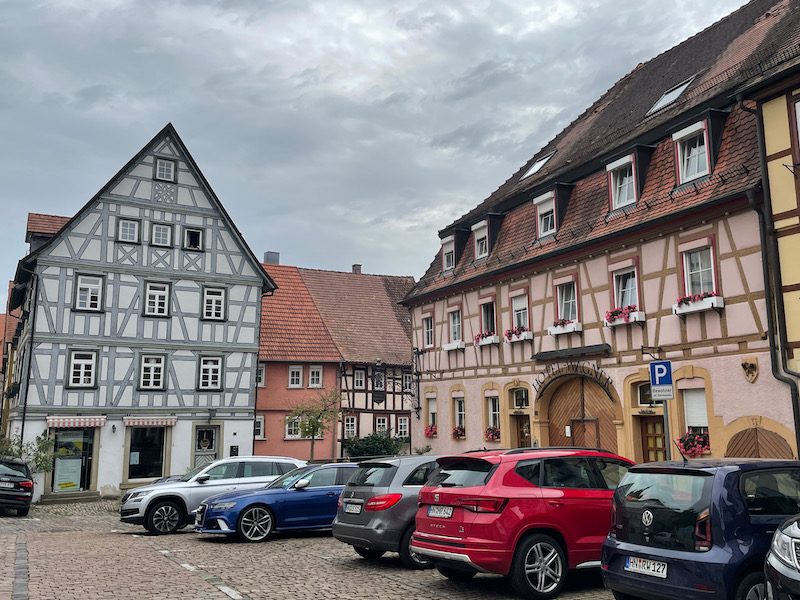
The Blue Tower is the symbol of Bad Wimpfen. It was built in the 12th century and served as a watchtower. The name probably comes from the roof, which is covered with bluestone (slate or limestone). There is still a tower keeping, making it the longest, uninterrupted tower guard tradition in Germany.
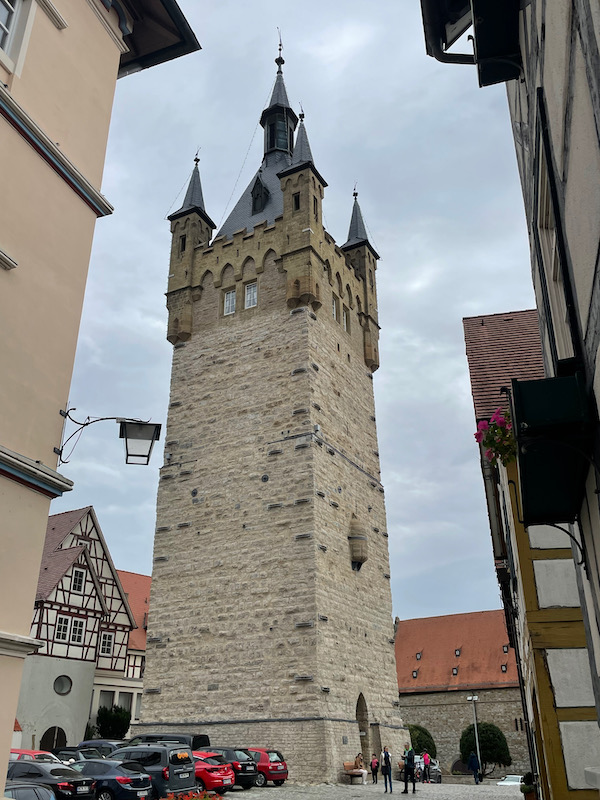
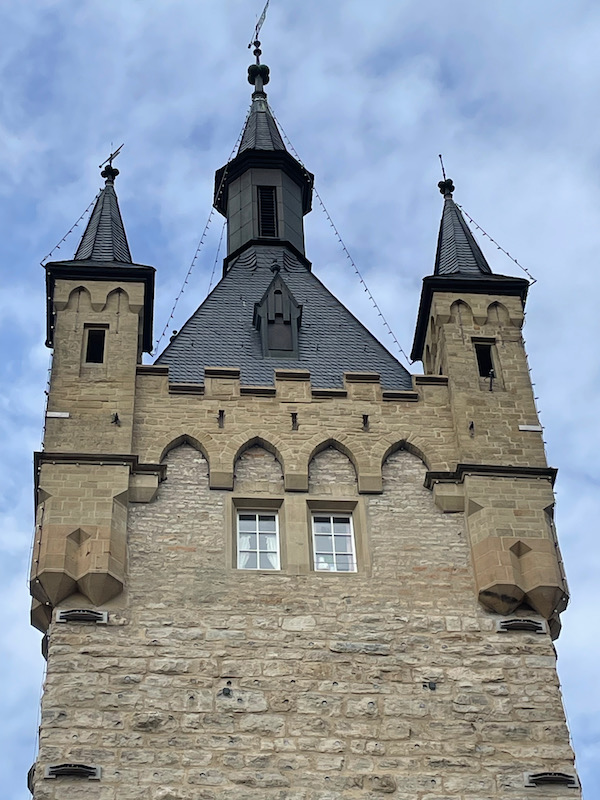
One of the most attractive half-timbered houses in the city is the "Mayor’s House", which dates back to the 16th century. In several places, there are carved heads for decoration.
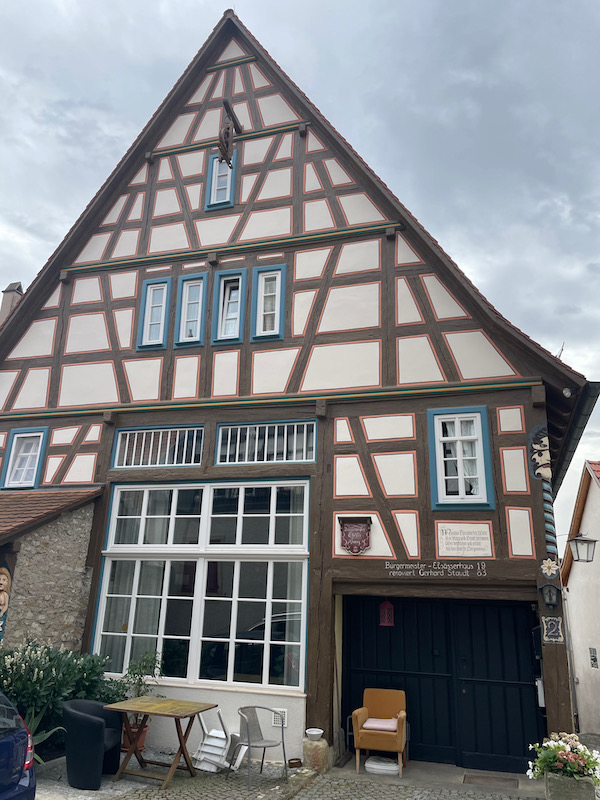

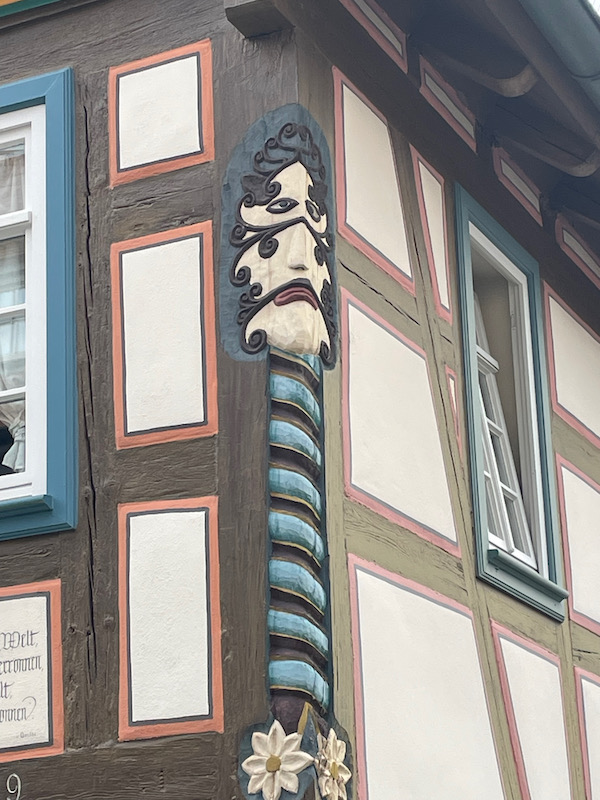
The Red Tower, which was the eastern keep of the Imperial Palace, dates back to around 1200. There is also a section of the fortifications and then a small square tower with a half-timbered structure and tent roof. This was built on the southeast corner of the fortifications below the Red Tower in 1656.
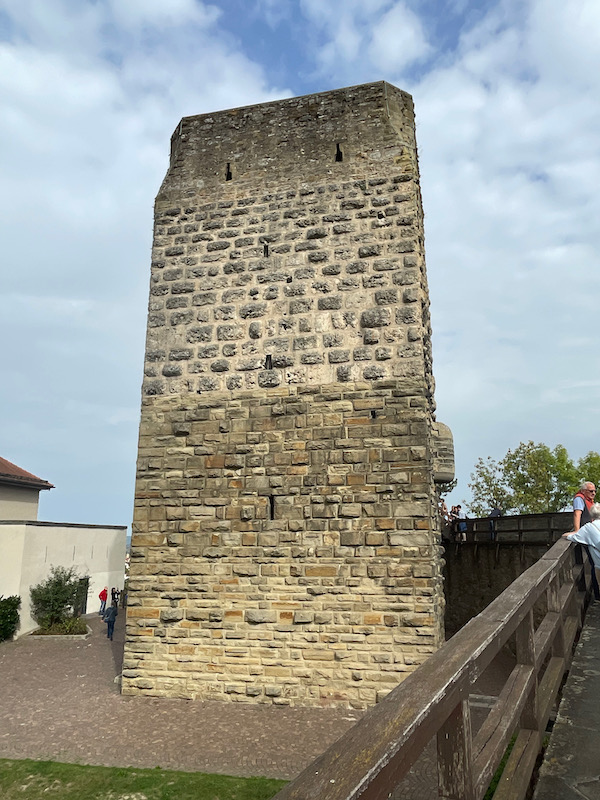
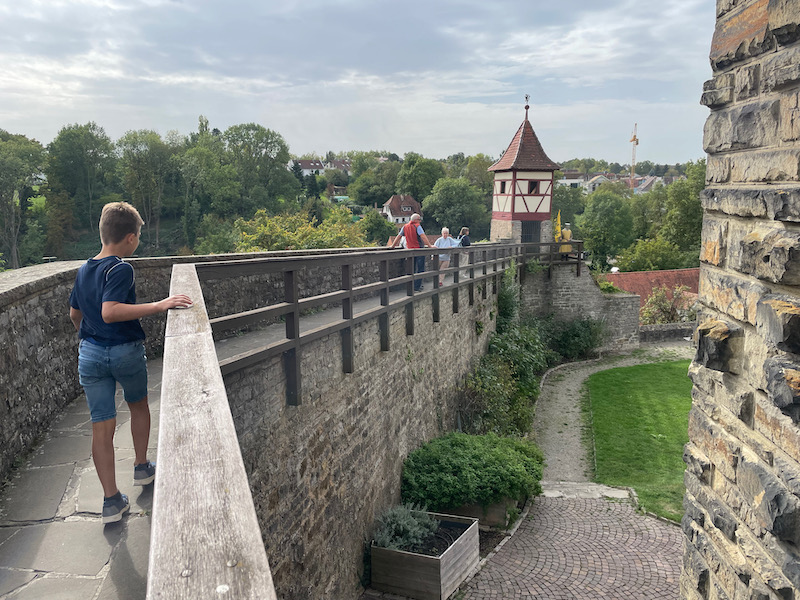
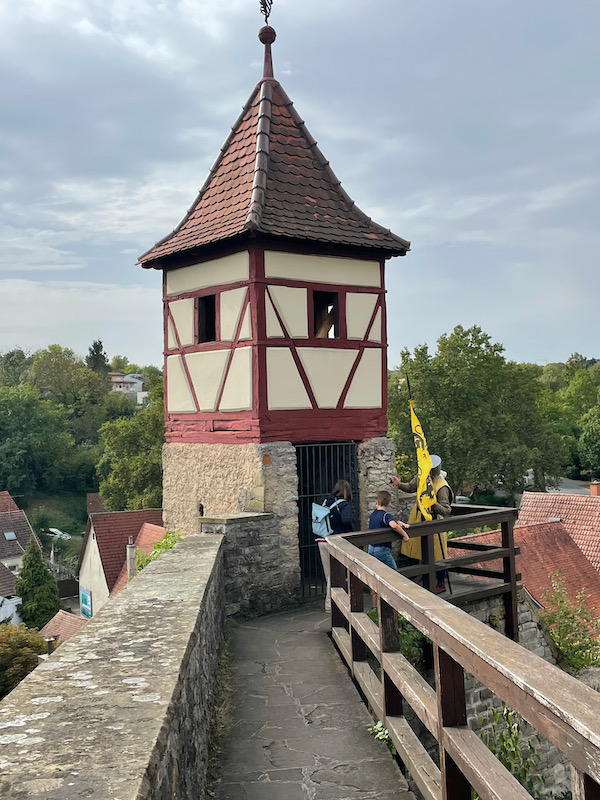

In the 13th century, the city fortifications were built, although most have now been removed. There are a few sections that can be seen, as well as this tower, one of the upper gates, and then the tiny lower gate.
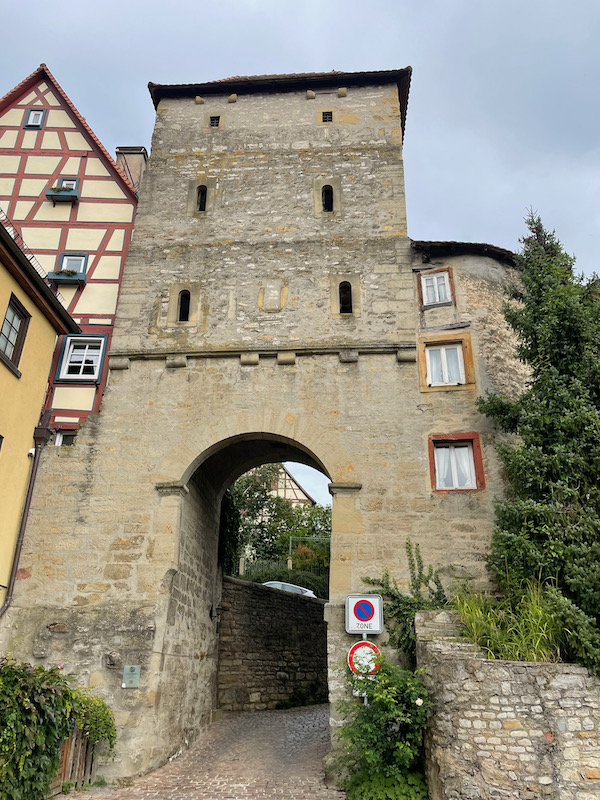
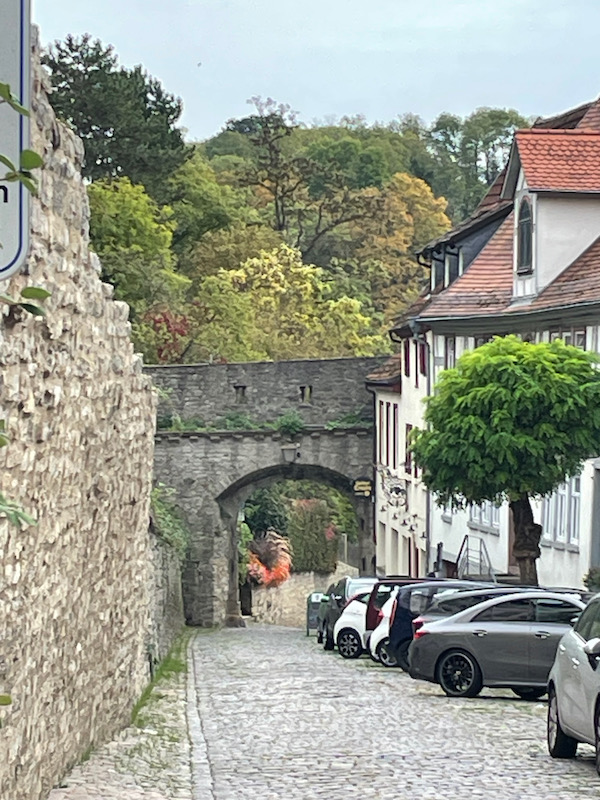
This is the Lion fountain, with a square basin in front of a double staircase. The fountain column is crowned by a seated lion figure made of sandstone with two coats of arms. The fountain figure is a copy of the original from around 1600.
